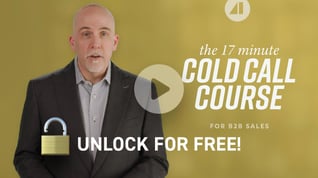The Gist:
- It can be difficult to change your client’s mind, especially if you try a very direct approach.
- Being consultative requires that you help your clients change their minds—and their decisions.
- Insight-based selling approaches are designed to help you compel change.
I have a strong allergic reaction to performative contradictions, when people take the same action that they tell you not to take. I break out in hives, flex my fingers, and type long comments—which I usually politely delete. Recently, for instance, a blogger claimed that salespeople should stop trying to change their clients’ minds, since the individual alone is the only one that can change their mind. He cited a popular new book from one of the top organizational psychologists in the world, intending of course to add both credibility and authority to his attempt to change your mind about whether you can change another person’s mind. According to that book, the best you can do is to ask the person whose mind might benefit from a change if they are open to rethinking something. (I daresay that the book’s author was trying to change readers’ minds too, or why bother to write a book?) This strategy is nothing more than a very polite way to change another person’s mind. The intention is what matters most.
Martin Luther would disagree: he once advised, the story goes, that “if you want to change the world, pick up your pen and write.” His namesake, Martin Luther King, Jr., wouldn’t like the idea too much either, as it would render moot all that his words, deeds, and example did to advance civil rights. Not being able to change minds wouldn’t do much for science, either: Newton’s formulation of the laws of motion and gravity would still be considered mere conjecture. For that matter, the whole idea of religious teaching—which many of you imbibe every Sunday—demands that words can change hearts and minds. Your sales pitch may not have eternal consequences, but the need to change your client’s mind is just as urgent.
How to Change a Mind
As you become a genuinely consultative salesperson, you start to recognize that many of the challenges your clients face result from something they are doing, a malady that changing partners or solutions will not cure. Your experience tells you that their complaints about your competitor result from the client’s own decisions and constraints, not the competitor’s product or customer service. To that extent, at least, our do-as-I-say-not-as-I-do blogger is correct: it can be challenging to change a client’s mind when they are heavily invested in their version of reality and when they’re saddled with constraints that make change difficult.
A more accurate assessment of the difficulty in changing minds involves tact(ics): telling people directly that they are wrong and treating them like a bunch of dunderheads isn’t a winning strategy. Neither is telling them directly that they should take your advice, simply because you are a professional non-dunderhead with a business card and a solution to sell. The direct strategy is the exact approach used by your Uncle Enrico when he explains that the Earth is flat and that only a giant ice crust keeps us from falling off the edge of the world. (Someday, I want to take all these flat-earthers on an Antarctic cruise to see the giant ice walls. I don’t believe I can change their minds, which means no one will ask for a refund).
Changing minds in sales starts with the belief that your contacts can be both intelligent and ignorant: they may be unaware of data that can help them improve their decisions. Better decisions are the first step to improving their results, both yours and theirs. As you mature as a consultative salesperson, you’ll use more and better insights to recognize those gaps and compel your clients to change.

What You Say and What You Show
Context lets you shape the sales conversation indirectly, by filling gaps in the client’s existing knowledge base and experience. In Eat Their Lunch, the chapter called “Capturing Mindshare” describes several facts, along with the context that helps shape a client’s view of their decisions. One example is the fact that 11,000 Baby Boomers retire every day in the United States. A person responsible for hiring and retaining the talent their company needs to grow is now confronted with the fact that they will struggle to buy experienced talent and may have to build that talent themselves.
Win customers away from your competition. Check out Eat Their Lunch
It’s one thing to tell a client directly, “You are not going to be able to hire experienced talent in the future. You are going to need to build it yourself.” It’s another thing to provide the “because” statement that informs your contact about why that’s true. It’s better if you don’t spell it out, allowing the US Census Bureau and the Department of Labor statistics to convey the implications with data and charts. Once seen, it can’t be unseen. When you say something, your client might think, it’s because you are trying to sell them your solution. When a neutral third party says it, it’s true.
While there are other powerful strategies for changing minds, my experience teaching a course called “Building Insights” has resulted in salespeople being perceived as both relevant and consultative, changing the shape of their sales conversation—and changing minds.
Make No Mistake About It
In the interests of full disclosure, I confess that I write to change your mind or reinforce your existing positive beliefs. I work diligently to infect you with the empowering beliefs, strategies, and tactics that, when applied, help you produce better results. Otherwise, what’s the point?
Being consultative means that you are responsible for helping your clients change by offering them a perspective they lack and advice that will improve their results, something we might otherwise describe as changing minds and enabling better decisions.
Do Good Work
- What change of mind would help your client get better results?
- What context can you provide that would give them the evidence that they might need to explore change?
- How can you enable your clients to recognize the need to change?

Essential Reading!
Get my 3rd book: Eat Their Lunch
"The first ever playbook for B2B salespeople on how to win clients and customers who are already being serviced by your competition."
Buy Now
Get the Free eBook!
The Sales Manager's Guide to Coaching Outcomes
The success of the team depends on the coach's ability to bring the players together, teach, and lead. Invest time in improving your leadership with this eBook.
Download Now







.jpg?width=768&height=994&name=salescall-planner-ebook-v3-1-cover%20(1).jpg)


